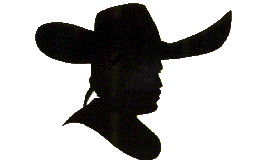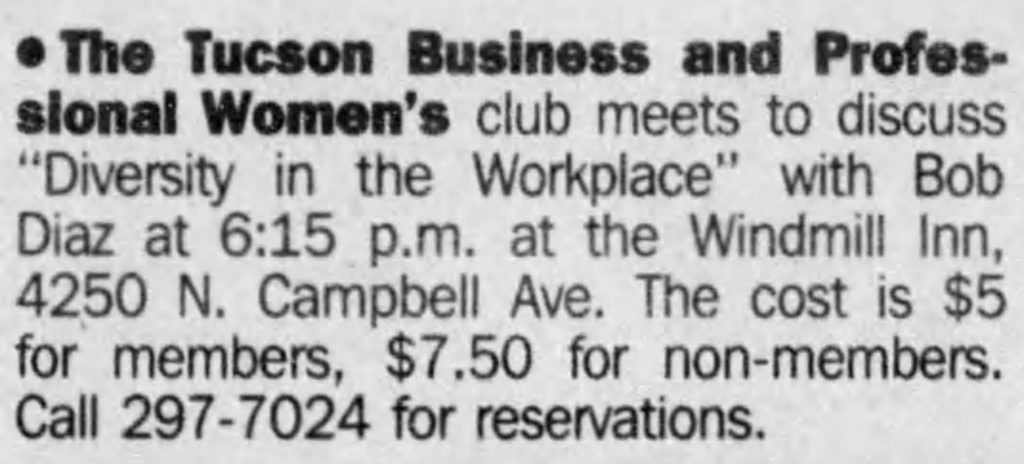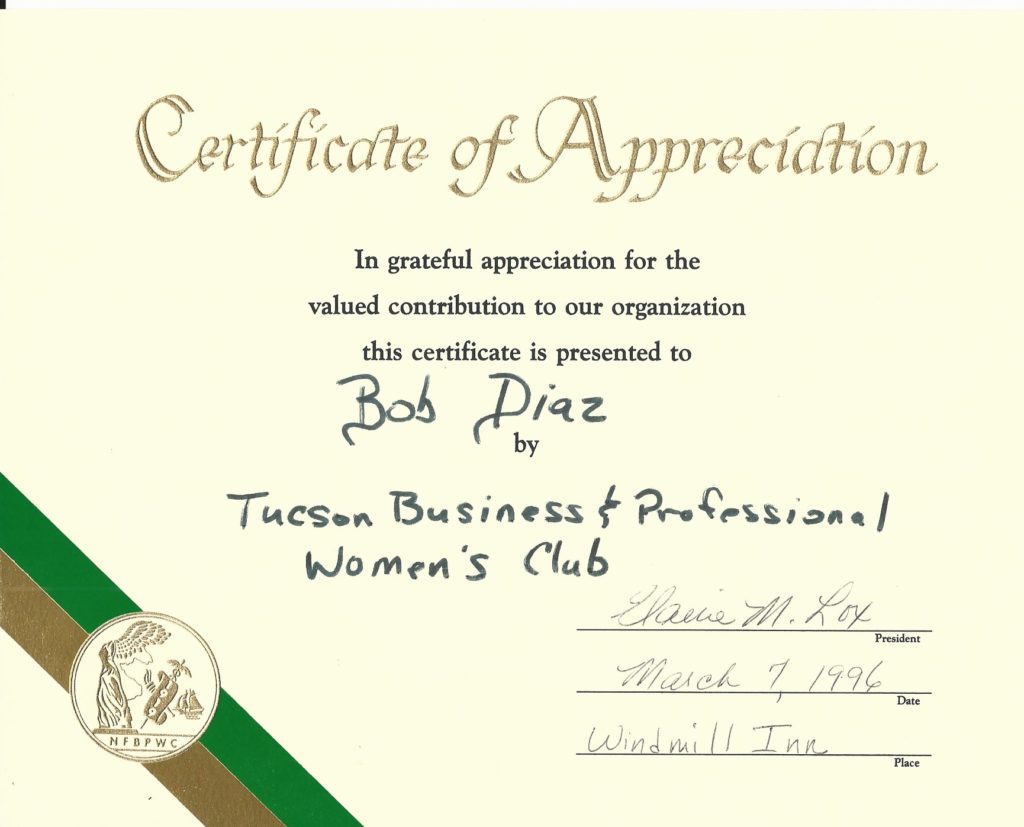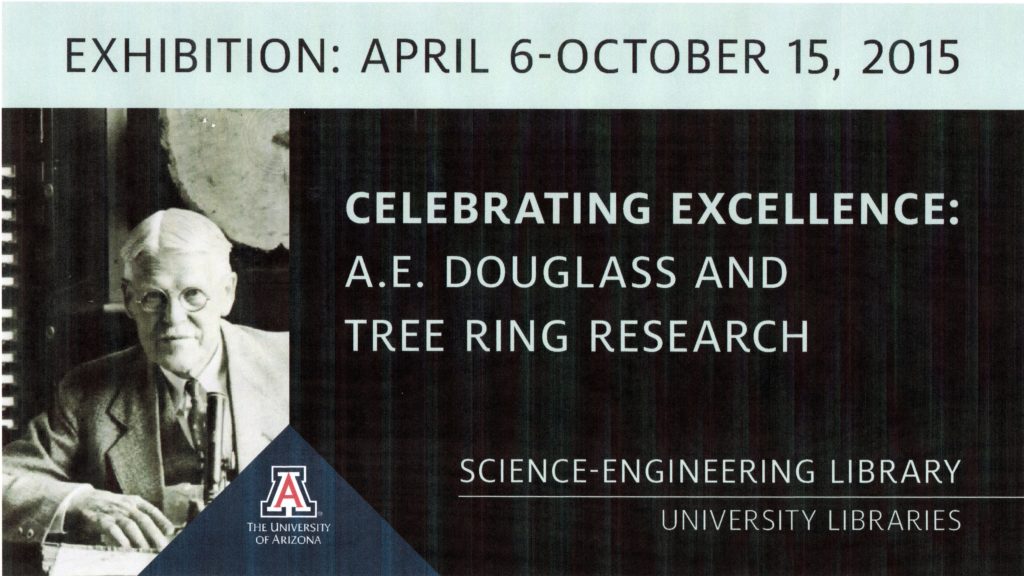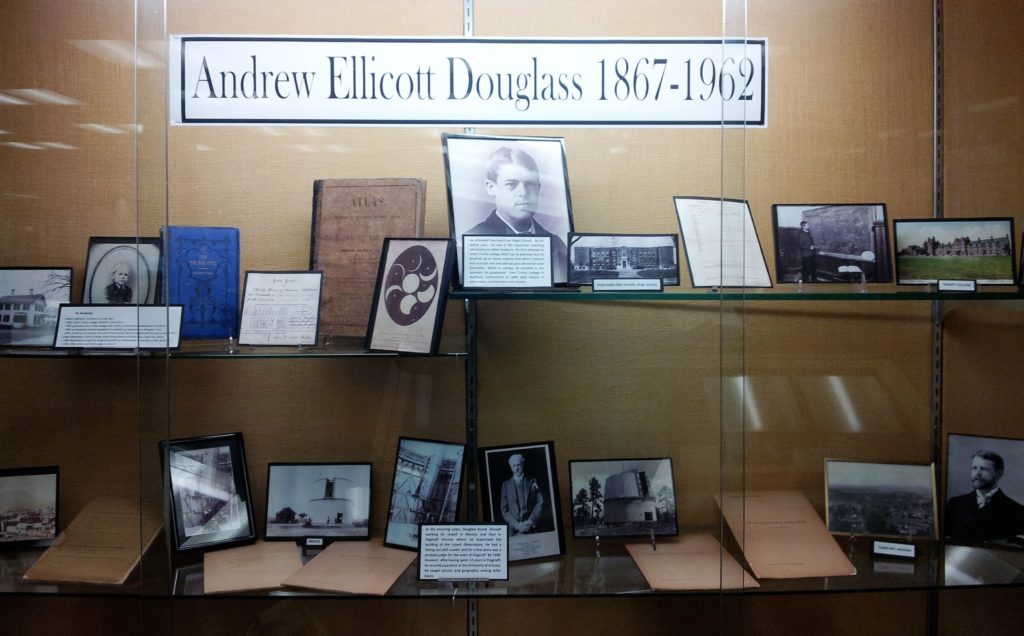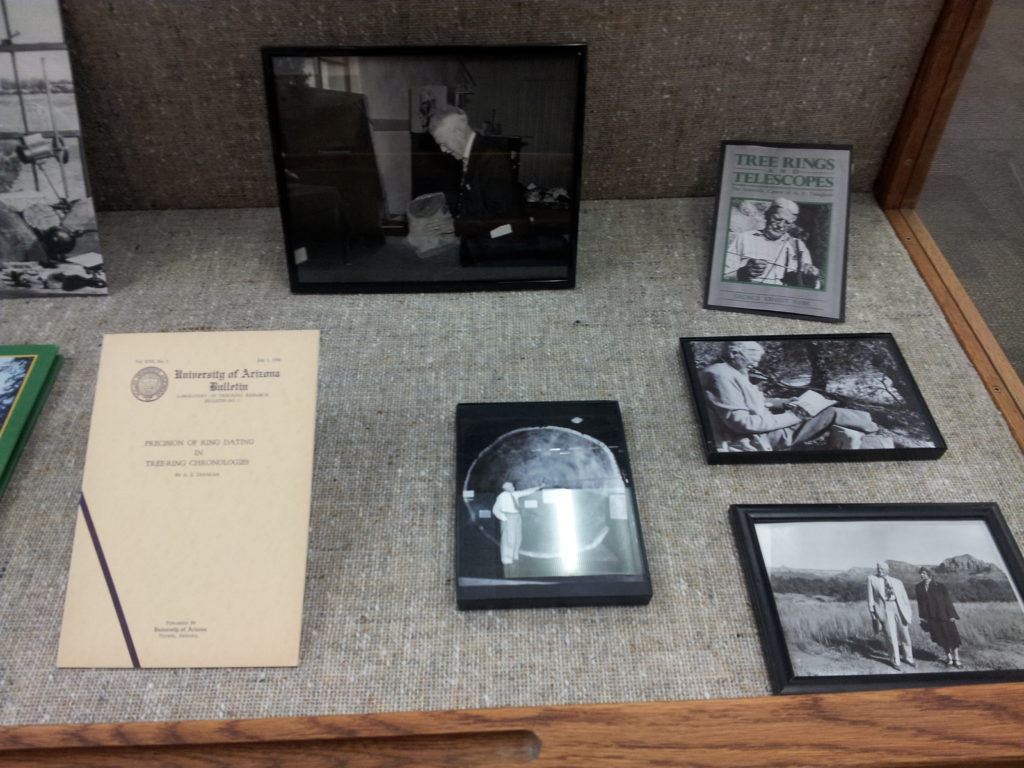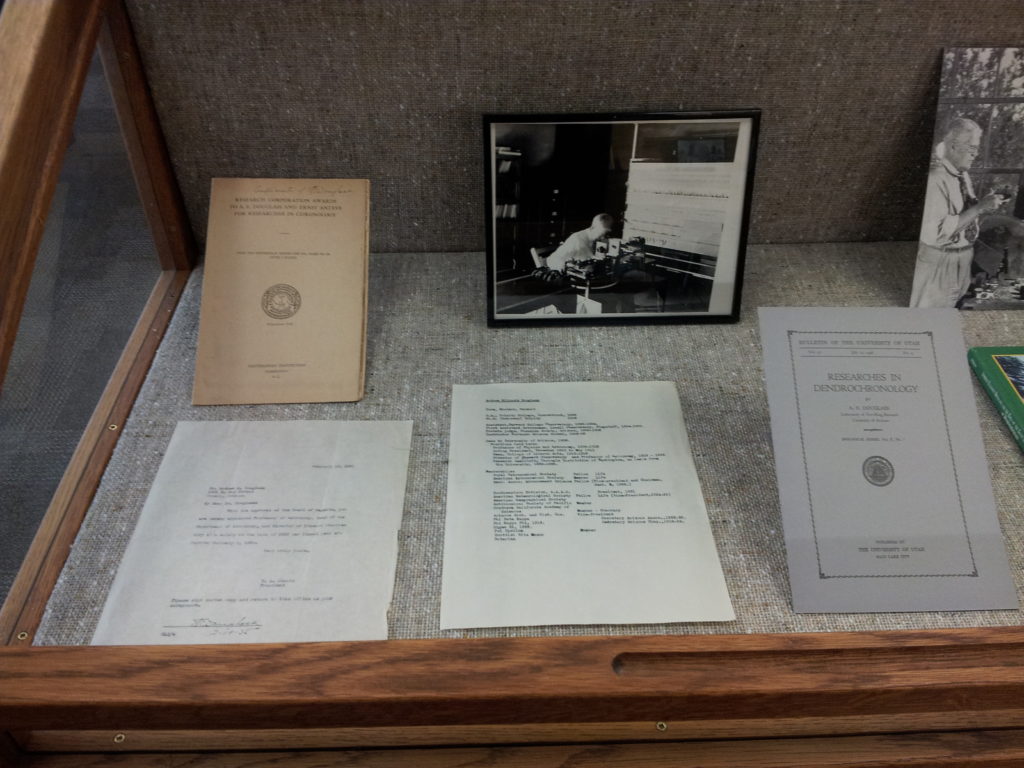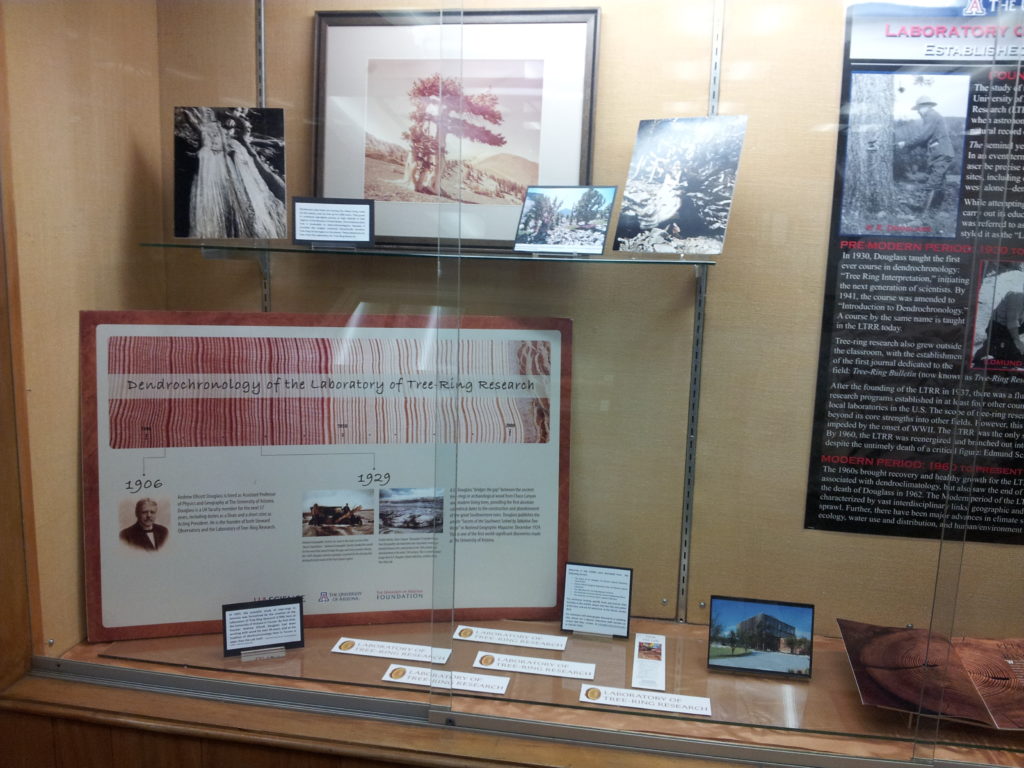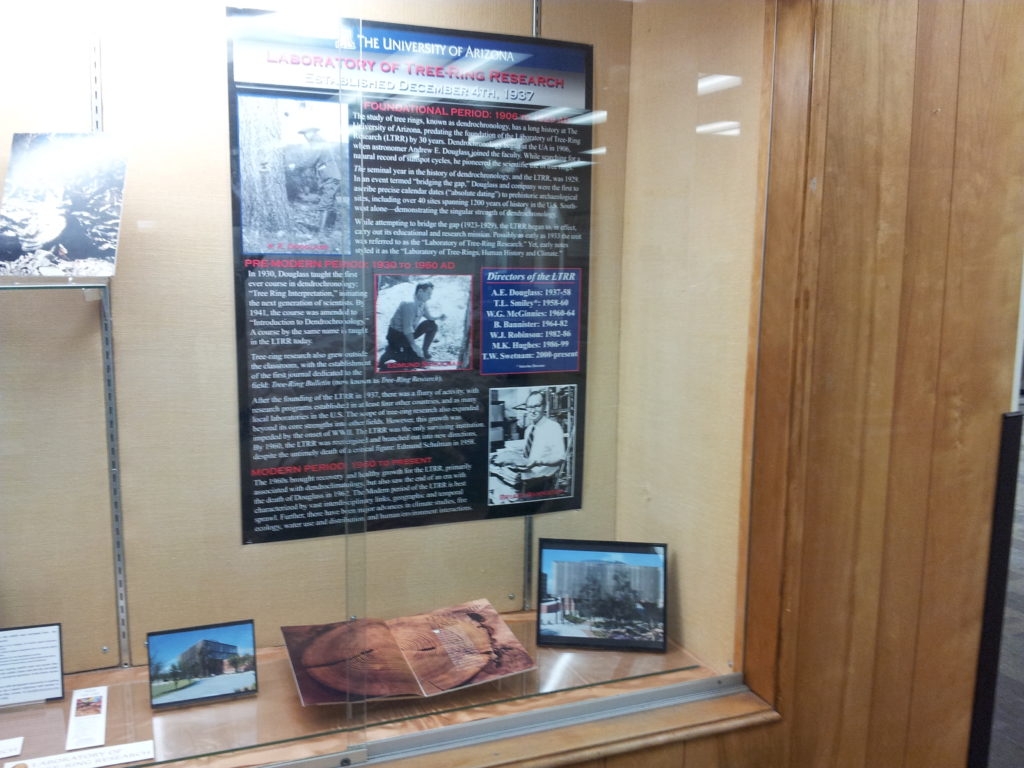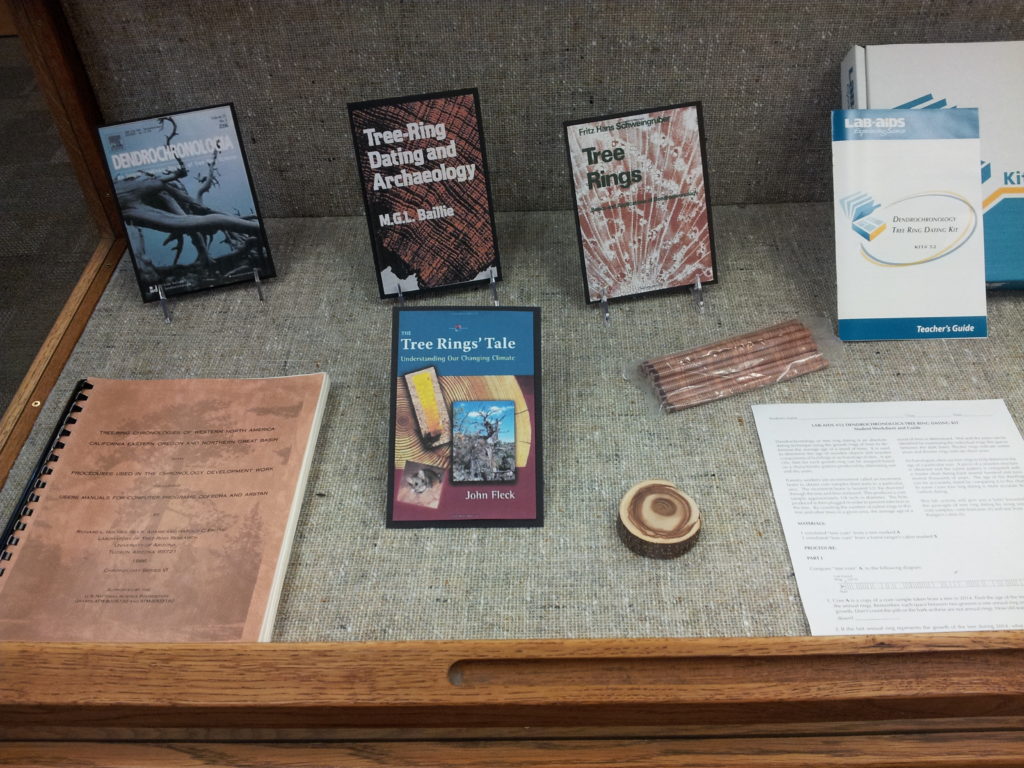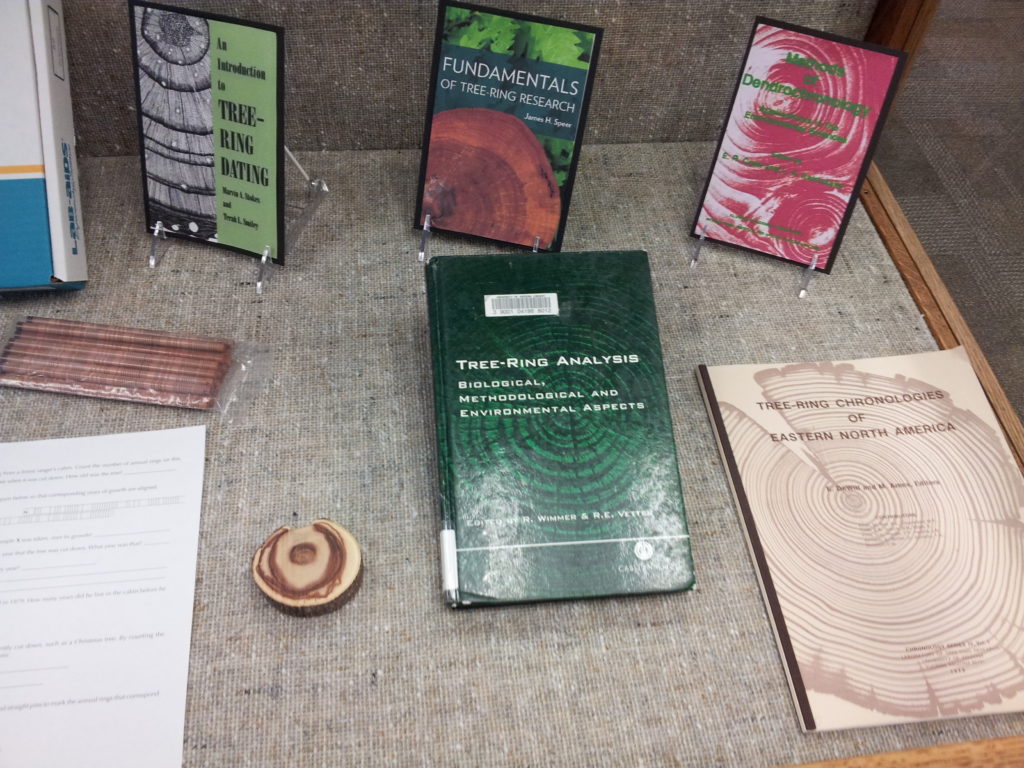I put this poster session together in April, 2000 for the Diversity Now! Conference held in Austin, Texas when I was the Assistant to the Dean for Staff Development, Recruitment and Diversity at the University of Arizona Libraries. I had worked since 1992 as Carla Stoffle’s assistant, and my main goal in this position was to help the Library move forward in becoming what at the time we called a “multicultural organization”. I worked with the Library’s Diversity Council on providing programming and training for the staff, and with the Library’s Cabinet to formulate policy statements and workplace expectations. The documents below all come from that time period. This poster session took place the same year that I stepped down from my position as Assistant to the Dean for Staff Development, Recruitment and Diversity to join the Fine Arts/Humanities team and begin a new chapter in my career as a music and dance librarian.
Abstract:
For the past ten years, the University of Arizona Library has maintained a strong commitment to promoting and incorporating diversity into the everyday life and culture of the organization. The purpose of this program is to describe the key components of this initiative, which include adding diversity in the mission, vision, and values of the organization, creating a half time administrative position dedicated to promoting diversity, the formation of an active Diversity Council whose mission is to model and promote diversity through educational programming and training, and the active pursuit of campus and community partnerships that foster and promote diversity. Numerous examples of the varied programming, training and cooperative efforts will be highlighted.
INITIAL CAMPUS EFFORTS
In the late 80’s, following the lead of other institutions like the University of Michigan and Stanford University, University of Arizona President Henry Koffler mandated that diversity become an campus-wide priority. The Campus Diversity Action Plan was published shortly thereafter.
Diversity at the campus level was defined as:
Diversity encompasses differences in age, color, ethnicity, gender, national origin, physical or mental ability, race, religion, sexual orientation, socioeconomic background, Vietnam Era veteran status, or unique individual style.
UNIVERSITY OF ARIZONA DIVERSITY ACTION PLAN MISSION STATEMENT
The purpose of the Diversity Action Plan is to develop a campus climate which understands, accepts, and embraces the value of diversity among students, faculty and staff. This will be accomplished through a comprehensive and broad application of the concept of diversity. Diversity encompasses differences in age, color, ethnicity, gender, national origin, physical or mental ability, race, religion, sexual orientation, socioeconomic background, Vietnam Era veteran status, or unique individual style. The program comprises the following components:
Initial and ongoing assessment of the attitudes, expectations, and needs of students, faculty, staff, and administration relevant to issues of diversity
Provision of educational information and resources regarding the unique characteristics of various groups
Facilitation of personal understanding, tolerance, acceptance and valuing of diversity through structured training programs which will be required of all
members of the University community
Enhancement of general social awareness of the value and importance of diversity through public activities, celebrations, and events
Integration into academic and training curricula specially-designed courses which promote positive attitudes and understanding of diversity and the
incorporation of materials addressing diversity into all areas of the academic curriculum
Evaluation of the impact of the program through utilization of a variety of assessment methods
The focus of this program will be to assure that all persons affiliated with this institution believe that their individual characteristics, talents, and contributions are valued.
University of Arizona Library Mission Statement
The University of Arizona Library is dedicated to meeting the diverse information, curricular and research needs of students, faculty, staff and affiliated customers. In an environment of free and open inquiry and with a commitment to excellence, the Library participates in the scholarly communication process to promote life-long learning skills and continuous educational achievement.
The University of Arizona Library Vision Statement
To be recognized as the primary community for access and appropriation of information
By developing excellent services that meet expressed and anticipated needs of the learner, and that aim to exceed expectations
By building a diverse staff, valued for their knowledge and abilities in gathering, organizing, and distributing information, prepared for collaborative learning and recognized as partners contributing to the research enterprise
By outreach with students, staff and faculty
INITIAL LIBRARY EFFORTS
In 1990-91, the University created a Diversity Task Force, later renamed the Library Diversity Council.
The Task Force set to work on studying the efforts of other Universities and made a number of recommendations to the Library administration that were intended to move the Library forward in achieving diversity.
One of its first
accomplishments was the creation of a Library Diversity Mission Statement and
formation of the LIBRARY DIVERSITY
COUNCIL.
UNIVERSITY OF ARIZONA LIBRARY DIVERSITY MISSION STATEMENT:
The University of Arizona Library has a dual dimension: (1) it is an institution whose function is to collect and provide access to information and ideas that have derived from varied intellectual traditions representing peoples and cultures over many centuries; (2) it is a community of people, a microcosm of the University community, which seeks to represent the richness of human diversity and to integrate and promote this pluralism. Through its collections and services, the Library seeks to be a MODEL OF and a MODEL FOR this intellectual and social diversity. Our vision for diversity represents a new effort to move beyond statements of concern to plans for action which will encourage diversity among our patrons and staff as well as our collections and services. The University of Arizona Library guarantees students, scholars and staff equitable access to its resources and for employees, equal access for advancement, without regard to their race, color, creed, religion, national origin, sex, sexual orientation, ancestry, age, marital status, handicap, or Vietnam veteran status.
UNIVERSITY OF ARIZONA LIBRARY DIVERSITY COUNCIL BYLAWS
1. Constituency
The Diversity Council consists of 9 members who are appointed to staggered two year terms. Before being appointed chair of the Council, a person must have served at least one year on the Council and can be either appointed or classified staff.
Members will be selected from Library staff who have expressed interest, via memo or other means, to serve on the Council and will be broadly representative of the diversity in the community and all job categories in the Library. Staff from diverse groups are encouraged to
become members of the Council, but the most important factor for membership is interest. The Council will make recommendations to the Dean for Libraries for new council members at the end of the fiscal year.
Ex officio members of the Council are the Dean of Libraries and the Assistant to the Dean for Staff Development, Recruitment an Diversity.
At the end of their two year term, council members may request to continue for a full term or for one year only. They may also continue on committees on a year-to-year basis as non-council members.
2. Committees (task forces of the council):
In order to accomplish specific tasks or goals, the council may initiate committees that consist of members of the Council and other interested Library staff. Some committees may be standing committees of the Council; others may be formed to accomplish a specific task, such as the Diversity Film Series. Non-council members serving on committees will be appointed on a year-to-year basis. Before being appointed chair of a committee, a person must have served at least one year on the Diversity Council.
3. Authority and Charges:
The Diversity Council reports to the Dean of Libraries with the following authority and charges:
The Council will be an advisory board for the Dean and the Library Cabinet and will make recommendations concerning diversity issues and their impact on existing policies and procedures. It will also make recommendations for changes to policies and procedures or make recommendations for implementation of new policies and procedures.
The Council will work to be a model for the Library for creating a multi-cultural organization.
The Council will be a resource on issues of diversity to all staff.
The Council will assess needs and assist the Library in moving towards a diverse environment.
The Council will set long range goals to meet the University and Library mission statements.
The Council will provide training on diversity issues.
The Council will communicate
and coordinate programs and events with related committees and groups within
the Library, the University, and the Tucson community.
Subsequent efforts to incorporate diversity at all levels of the organization have included:
- adding diversity to the Library’s mission, vision and values statements.
- creating a half time administrative position devoted to diversity
- including diversity in the Library’s strategic planning efforts.
- adding diversity related questions to all job interviews.
- incorporating diversity expectations into all job descriptions, including those of work team leaders and team leaders.
- aggressive programming and training efforts, in collaboration with other campus units, aimed at all levels of staff, including administrators.
TEAM LEADER INTERVIEW PROCESS
Whenever the Library recruits for a new team leader, the Diversity Council is included in the interview schedule. Other groups that meet with a candidate also typically ask diversity related questions. A sampling of such questions is listed below.
================================================================
The Library is a multicultural environment and is committed to maintaining diversity to serve our customers. Describe where you have worked with diversity and how you have promoted it in positions you have held.
The Library’s Diversity Value Statement is: We value, respect, and are strengthened by viewpoints and experiences outside the dominant culture. We strive to build a multicultural organization. Describe situations where you have acted on this value.
As a team leader, part of your job will be to chair selection committees for open positions within your team. Please explain your understanding of diversity related issues as they pertain to recruitment and selection of employees. How would you balance the need to create a multicultural institution with other compelling factors?
How have you participated in diversity education and how have you encouraged diversity in your previous positions? Are there other related activities that you have taken part in?
Describe any challenging situations in your previous positions where diversity was an issue. How did you deal with the situation and what was the outcome?
As a team leader, what programs can we count on you to implement to encourage diversity thinking on your team?
Can you share with us an experience you have had where diversity within a team precipitated conflict–and share with us what your response to that conflict was?
How have you learned to work effectively with people who are very different from you–either in culture, gender, sexual preference, age, temperament, etc.?
As a team leader, what would you expect from the Diversity Council?
DIVERSITY IS BUILT INTO TEAM LEADER AND WORK TEAM LEADER EXPECTATIONS DOCUMENTS. EACH TEAM LEADER IS EVALUATED BASED ON HIS/HER ABILITY TO MEET EACH EXPECTATION.
THE UNIVERSITY OF ARIZONA LIBRARY
EXPECTATIONS OF TEAM LEADERS
1. Understands and communicates the Library’s mission, vision, values, goals, and while conveying the larger context in which the Library operates, exhibits personal commitment and takes leadership in creating team commitment to achieving them. Leads team in translating library and team strategic goals into action.
2. Promotes team commitment to a customer focus.
3. Works proactively and constructively to identify, define, and solve problems within their own team and between teams and other individuals and teams. Works with team members to develop coaching mechanisms to help individual team members who are having performance problems.
4. Facilitates and involves all team members in team planning, objectives setting, and problem solving, empowering and holding team members accountable for participation and results.
5. Works with team to define team and team leader roles and appropriate methodology for decision-making. Seeks and utilizes data and objective criteria for decision-making. Helps team recognize options and consequences of team decisions. Has final accountability for seeing that decisions get made and that there is appropriate follow through.
6. Fosters an environment that encourages risk taking and creativity.
7. Works proactively and constructively to develop and coach team members to be self-motivated; ensures professional, career, and skill development; ensures structure is in place for all team members to participate in the coaching and development of all staff.
8. Communicates and leads development of team understanding and support of library-wide decisions and priorities; helps the team communicate and create understanding of team issues library wide.
9. Helps promote and support diversity within the team and the Library.
10. Works with the team to build self-managing capabilities including effective delegation to sub-teams and individuals.
11. Champions cross-functional efforts to improve quality, service, and productivity.
12. Anticipates, initiates, and responds to changes in the environment to help the Library move forward.
13. Leads in management of budgets and fosters understanding of and responses to internal and external funding opportunities and constraints.
THE UNIVERSITY OF ARIZONA LIBRARY
EXPECTATIONS OF WORK TEAM LEADERS
Definition
The primary purpose of a Workteam Leader is to take leadership in facilitating processes within the scope of a specific workteam to enable the workteam to accomplish its work.
Assumptions
1. That the Performance Learning Project will result in each team developing work and behavioral expectations for all members and a mechanism for holding each other accountable.
2. Team will use these expectations as a basis for a dialog about observable outcomes.
Expectations
1. Understands and communicates the Library’s mission, vision, values, goals, and, while conveying the larger context in which the Library operates, exhibits personal commitment and takes leadership in creating workteam commitment to achieving them. Leads workteam in translating library and team strategic goals into action.
2. Promotes workteam commitment to a customer focus by modeling appropriate customer service behavior and responding appropriately to customer needs.
3. Works proactively and constructively to identify, define, and solve problems within their own workteam and between workteams and other individuals and teams.
4. Facilitates and involves all workteam members in workteam planning, objectives setting, defining expectations, and problem solving, empowering and holding workteam members accountable for participation and results.
5. Works with team to define team and work team leader roles and how decisions are made. Helps workteam recognize options and consequences of workteam decisions. Is individually accountable for seeing that decisions get made and that there is appropriate follow through. It may be necessary for workteam leaders to make decisions for the workteam in limited circumstances such as the workteam being unable to reach a decision or during special circumstances.
6. Coordinates the gathering, analysis, and utilization of data and information to make decisions.
7. Models and encourages creativity and informed risk taking.
8. Works proactively and constructively to develop and coach workteam members to be self-motivated and to be lifelong learners.
9. Communicates and leads development of workteam understanding and support of library-wide decisions and priorities; helps the workteam communicate and create understanding of team issues library-wide.
10. Demonstrates support for diversity as defined by the Library.
11. Works with the workteam to build self-managing capabilities including effective delegation to workteam members.
12. Champions process improvement and other cross-functional efforts to improve quality, service, and productivity.
13. Anticipates when possible, participates with an open mind, and responds appropriately to changes in the environment.
14. Understands the allocation of budget and resources process. Leads in management of budgets and resources.
15. Attends and actively participates in workteam meetings.
16. Models good communication skills by actively listening and giving and receiving constructive feedback.
17. Interprets, communicates, and applies relevant library policies.
18. Identifies and implements effective ways of making staff and students feel accepted and valued.
19. Leads and participates in the hiring process, primarily within the workteam.
20. Takes leadership in developing and implementing a training program for staff and students which may include customer service.
21. Schedules work to ensure that time is available for consultation with and coaching of staff and students. Maintains an open attitude to staff,
students, and their ideas.
22. Develops facilitation
skills, uses them, and supports workteam members in doing the same.
1998/99 LIBRARY STRATEGIC PLAN (partial)
GOAL 4, “STAFF ENVIRONMENT”: To transform the Library work environment and culture to improve the way staff are supported through programs and activities that enhance their ability to achieve the Library’s Mission.
CONTEXT STATEMENT: Sustained support and effort on both the individual and group level is instrumental to the success of a team-based learning organization. We hold ourselves and each other accountable for achieving the Library’s mission and for resolving any conflicts that arise in this process. Creative flexibility is needed in the ways in which the Library manages work assignments, promotes career progression, and promotion, pursues and provides competitive salaries, supports continuous education and learning, evaluates performance, and recognizes and rewards staff achievements.
To serve an increasingly diverse population, the Library recognizes that diversity among its staff is a strength in understanding, responding to, and respecting the needs of our customers.
Staff need opportunities to develop proficiencies in utilizing technologies and other tools to achieve new and higher performance satisfaction levels.
OBJECTIVES:
1. INDIVIDUAL AND TEAM DEVELOPMENT: To support individual and team development through the continuing work of the Performance Project Team, through December 31, 1998; and through the developmental systems that are created by this project, by June , 2000.
2. REWARDS AND RECOGNITION: To strengthen employee rewards and recognition by enhancing existing programs and developing new ones, by June, 1999.
3. MINORITY RETENTION: To increase the retention of minority individuals within the Library by openly addressing issues of participation and mentoring, as well as white privilege, racism and other forms of injustice by June, 2000.
4. MINORITY RECRUITMENT: To increase the diversity of the Library and better serve our increasingly diverse customer base by proactively recruiting and hiring minority librarians and career staff by June, 1999.
University of Arizona Position Description
Position Title: Assistant to the Dean for Staff Development, Recruitment and Diversity
Position type: Appointed personnel, full time, exempt.
Department: Library Support Team
Reports to: Dean of the Library/LST Team Leader
Regular Hours of Work (indicate if changes occur)
8am to 5pm
The Library is an innovative, team-based organization committed to continuous learning, increasing customer self-sufficiency and fostering a diverse environment. Our mission includes furthering cultural transmission, preservation and the educational roles of the Library.
All work that addresses customer needs will be performed (e.g. circulation, reference, check-in, cataloging, process improvement, etc.). Individuals can expect that this work will include team-wide and Library-wide work (e.g. process improvement teams, meetings, planning, Strategic Long Range Planning, etc.). As customers’ needs change, our work formula or patterns may change. As a result, team and Library work is negotiated within the team, the end product being an agreement in writing in the performance evaluation.
The incumbent performs the work appropriate for a librarian, as needed within the team, to meet the changing needs of the Library’s customers. As those needs change or disappear it may be necessary to reassign staff to areas in greater need of support and to change work hours to accommodate our customers.
Each team member is responsible for:
* understanding and communicating the vision, mission and priorities of the Library and the team(s) in order to move the Library and team(s) to their goals
* committing to excellence, process improvement and continuous learning
* participating in the planning and decision-making processes for customer services
* obtaining the information necessary to perform his/her job
* accepting change and exhibiting flexibility in working within teams and dealing with team and Library-wide issues and concerns
* helping fellow team members in a team-based work environment and participating on cross-functional and process improvement teams in the Library as necessary
* attending and participating in team meetings and projects as assigned and facilitating and leading meetings as needed
* solving as many of their own problems as possible; expected to resolve issues close to the action rather than to pass responsibility for solutions to others and are empowered to do so
* making decisions at appropriate levels
* prioritizing work
* maintaining a customer service orientation
* challenging him/herself and colleagues to think creatively and broadly
II. PURPOSE/OUTCOME OF THIS POSITION:
The development of a supportive and responsive multi-cultural and diverse working environment is a top priority for the University of Arizona Library . Creation of such an environment involves pursuing new strategies for recruitment of librarians and addressing staff development issues relating to diversity and other change processes in which the Library will be involved. This position will be responsible for coordination of all staff development programs and professional recruitment, and will carry out special projects relating to personnel policy and procedures. The incumbent will participate fully in the Dean’s Cabinet meetings, and act as liaison with the Staff Development Committee, Affirmative Action Committee, and the Diversity Action Council. The position reports to the Dean of the Library.
To contribute to the profession and the professional literature to fulfill the responsibilities of a library faculty member through service (e.g., active participation in library-related associations and organizations) and scholarship (e.g., presentations at local and national conferences and meetings, publication of original research).
As a member of the library profession, the Library Faculty Assembly, and the general faculty of the University:
* To resist censorship of library materials and eliminate barriers to access to
information
* To commit to intellectual freedom in the pursuit of truth and knowledge for
customers and staff
* To commit to honesty and respect for customers and staff
* To commit to the professional Code of Ethics for Librarianship
* To be involved in the governance of the Library and the University through service
in the Library Faculty Assembly and on appropriate University committees
III. PRINCIPLE RESPONSIBILITIES
1. (.5 time) Coordinates the Library’s staff development activities. Works with an advisory committee, members of the Library’s Human Resources team and a .5 administrative secretary to conduct needs assessment, plan and implement training and professional development for librarians and staff. Administers Staff Development Fund and Special Workshops Fund. Coordinates new staff orientation.
2. Acts as the administrative liaison with the Affirmative Action Office, University Diversity Council, the Provost’s Office on Appointed Personnel and the University Human Resources Department (where appropriate). Updates and monitors the Library’s Affirmative Action Plan and Diversity Action Plan in conjunction with appropriate committees. Administers Diversity Fund.
3. Works with the Library Diversity Council to coordinate programs in support of building a multicultural organization. Provides leadership to the Diversity Council as it strives to become a model the Library in working across racial and ethnic lines.
4. Works with other members of the HR Team to assess needs for team development, systems and process change, new policies and procedures that support the continued success of the Library with its customers.
5. Works in conjunction with Library’s human resources specialist and selection teams to ensure that recruitment pools for professional positions are diverse. Provides guidelines and support for search committees. Insures compliance with University EEO/AA and Diversity plans. Assists with interviews of candidates on site and at professional meetings.
6. Participates fully in leadership activities of the Library through membership on Library
Cabinet.
7. Supports the library profession beyond primary job responsibilities through involvement in professional service and scholarship.
LIBRARY-WIDE RESPONSIBILITIES:
1. Participation in library strategic project teams, cross-functional teams, and other teams required to complete the goals of the Library:
The Library Diversity Council has proactively
partnered with other campus units and groups, including the University
Diversity Action Council, the College of Agriculture’s Diversity Committee,
and the Commission on the Status of
Women to provide top notch programming, training and celebratory events that
unite the campus and the Library community.
Recruitment of a Diverse Staff
A key responsibility of the Assistant to the Dean for Staff Development, Recruitment and Diversity has been to proactively recruit people of color to apply for open positions at the University of Arizona Library. This has been accomplished through:
- training selection committees on diversity and affirmative action issues
- attending conferences and handing out recruitment packets to librarians of color and other diverse individuals.
- developing a network (database) of potential recruits and sending them invitations to apply for positions currently under recruitment
- advertising the UA’s vacancies on listservs that reach librarians of color. These include REFORMANET, EQUILIBN, the Chinese American Librarian’s listserv, DIVERSITY-L, and AFAS-L, the listserv of the AFAS Roundtable.
